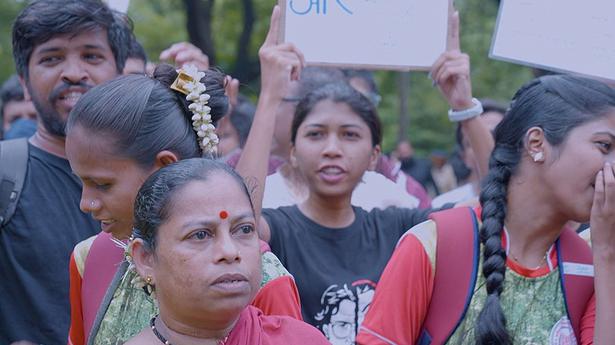
Capturing in frames a key fight for environment
The Hindu
The Leopard's Tribe , being screened at IDSFFK, documents the protests against the Aarey metro car shed project in Maharashtra
The pace with which events overtake documentation efforts can be quite a challenge when making films on evolving issues. The Aarey metro car shed project in Maharashtra has taken several twists and turns, with the Uddhav Thackeray-led Maha Vikas Aghadi government finding alternative land for the project to save the forestland. The Eknath Shinde government which took charge after that reversed this decision. Within a month, the Supreme Court stayed tree-felling in the Aarey forests until it takes up a petition filed by environmental activists challenging the project.
In Miriam Chandy Menacherry's documentary The Leopard's Tribe, being screened in the short documentary competition category at the 14th International Documentary and Short Film Festival of Kerala (IDSFFK), the events till the very recent Supreme Court order are captured, making it almost as updated as a news report. Yet, it has not lost the rooted feeling that comes with a long documentation effort, which can only be achieved by spending a considerable chunk of time in that space. The documentary thus becomes more than a mere chronicle of the protests.
A striking point that the documentary makes is of the ease with which the Adivasi residents of Aarey views human-animal conflict. A woman, who is also one of the leaders of the Aarey protests, speaks almost endearingly of the leopard that visits her courtyard. She speaks from a viewpoint of coexistence, and from the understanding that it is not the leopards who have strayed into human settlements, but the humans who are living in what was originally space used by animals.
Art becomes one of the many effective tools for their protest. It ranges from beautiful wall art representing their struggles against the establishment to a collaboration with a hip-hop group, which produced The Warli Revolt, a song that went viral, taking the issue to many who had not heard about it till then. But, more than anything else, it is the conviction of the Adivasi people who lead the protests that made the establishment sit up and take notice, although it remains to be seen whether their struggle has paid off.













